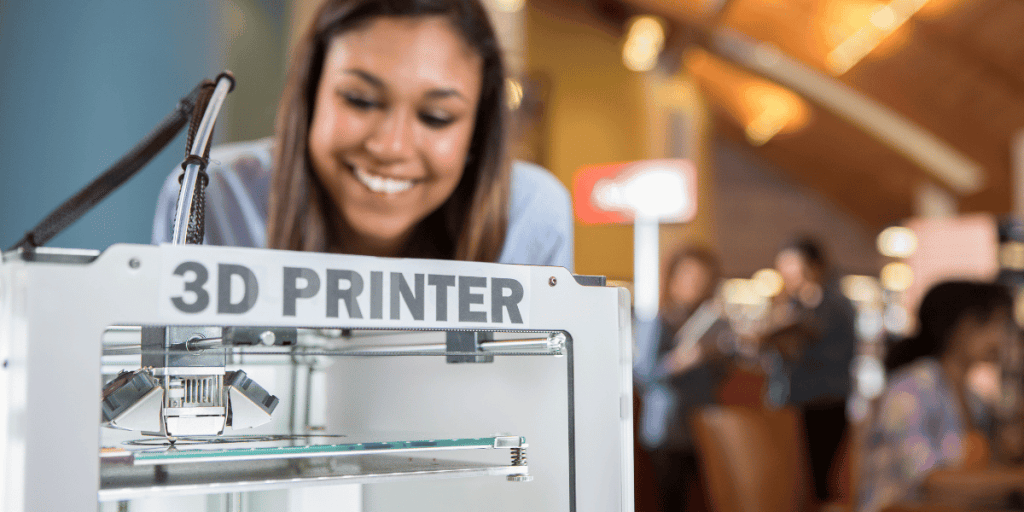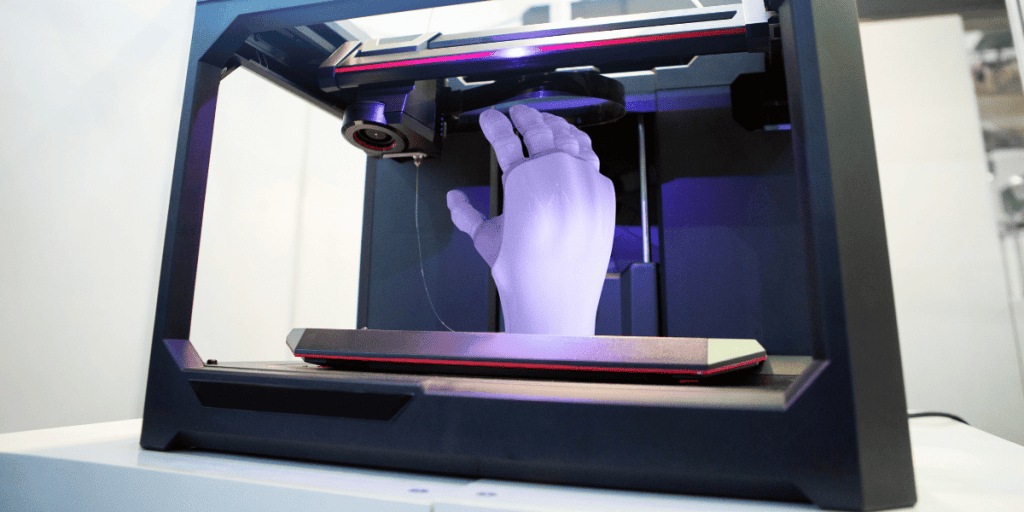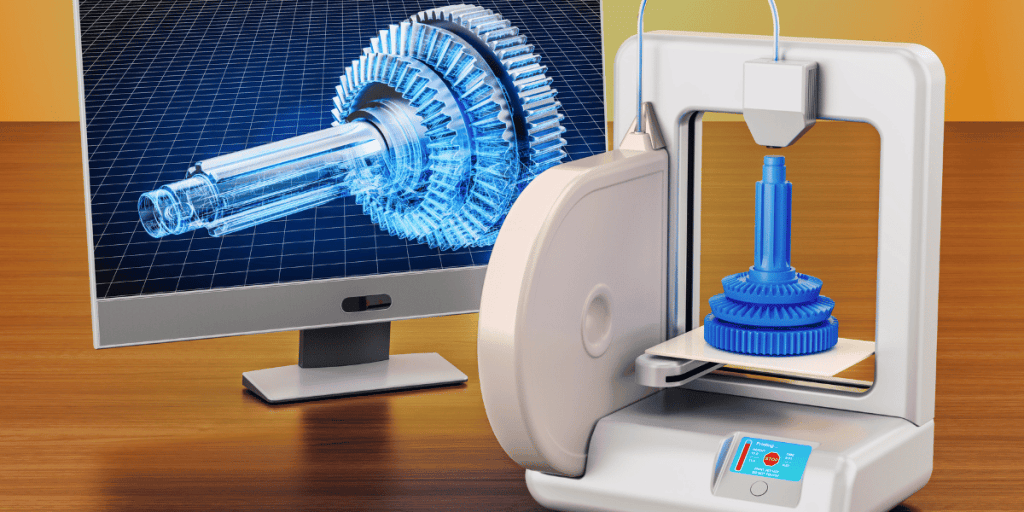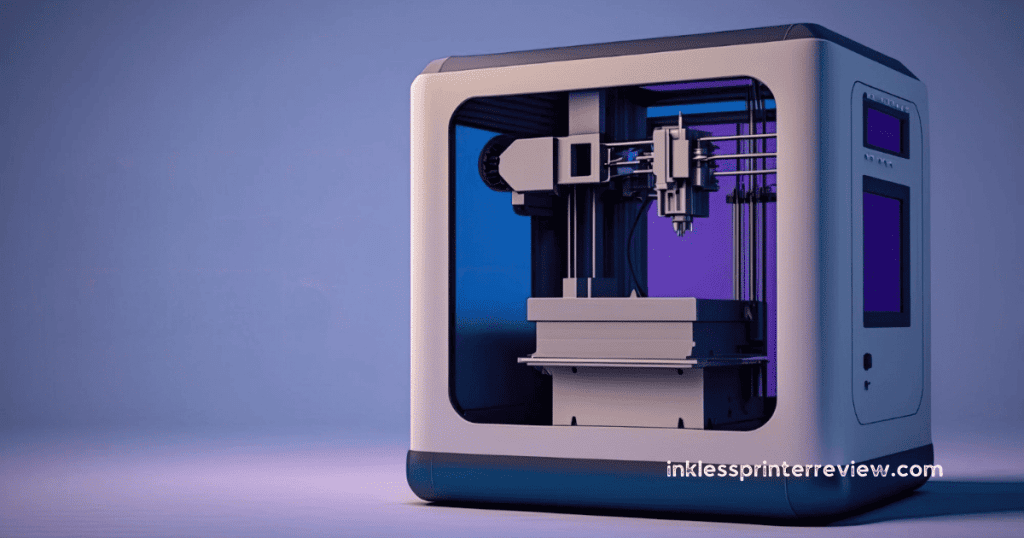The future of printers is a subject that has intrigued many, as the printer market seems to have reached a plateau in terms of innovations. However, this could be an indication of a maturing market or a shift towards more advanced printing technologies.
One such technology that holds immense potential is 3D printing. Although currently expensive, there are DIY options and cheaper models emerging, making it more accessible to the masses.
Another area of focus is printer ink, which has gained notoriety for being more expensive than oil, perfume, and even gold. Major manufacturers profit heavily from the replacement ink business, but there is hope on the horizon with the emergence of cheaper refill alternatives that are expected to become standard in the future.
Furthermore, inkless printing technology has made significant strides in recent years. Companies like Zink Imaging have introduced inkless printers that utilize special paper embedded with color-forming dye crystals. This innovative approach eliminates the need for traditional ink cartridges and offers a more environmentally friendly solution.
In addition to these advancements, there have been notable developments in wireless printing, re-printable paper technology, and eco-friendly alternatives like soy ink.
The future of printers holds exciting possibilities as new technologies continue to surprise us and redefine what we thought was possible.

3D Printing Revolution
Get ready because the future of printers is about to be revolutionized by the mind-blowing capabilities of 3D printing. This exciting technology, also known as additive manufacturing, allows for the creation of tangible and true-to-life models from CAD designs.
With 3D printing, you can bring your imagination to life in a way that was once only possible in science fiction.
One of key advantages of 3D printing is its potential to reduce costs. While the cost of 3D printers themselves may currently be high, there are DIY options and cheaper models becoming available on the market. As this technology advance and become more accessible, we can expect prices to decrease even further.
In addition to cost reductions, another area where innovation is taking place is inkless printing. Zink Imaging has developed an inkless printer that uses special paper with color-forming dye crystals. This eliminates the need for traditional ink cartridges and offers a more environmentally friendly alternative.
When considering the future of additive manufacturing, it’s important to acknowledge that predicting what lies ahead can be uncertain. However, one thing is clear: new technologies will continue to surprise us. Whether it’s through advancements in cheaper refills or inkless printing solutions, the possibilities for improving and expanding upon current 3D printing capabilities are endless.
So get ready for a revolution in the world of printers as we embark on this exciting journey into the future of additive manufacturing. The 3D printing revolution is just beginning, and it promises to reshape how we think about printers forever.
Affordable Ink Refills
Squeezing every drop of value from your printer is like finding a pot of gold at the end of a rainbow. As technology advances, the cost of ink cartridges continues to be a major concern for many printer users. However, there’s hope on the horizon with the development of affordable ink refills.
With the rise of 3D printing and inkless printing technologies, there’s been a growing demand for cheaper refill options. Major manufacturers have long profited from exorbitant ink prices and the replacement ink business. But now, alternative refill options are becoming more widely available, challenging this monopoly.
Cheaper refill alternatives are not only more cost-effective but also offer environmental benefits. Many eco-friendly alternatives, such as soy ink cartridges, have gained popularity in recent years due to their reduced impact on the environment. Companies like SoyPrint are leading the way in offering these eco-friendly laser print cartridges.
In addition to traditional ink cartridges, innovative inkless printers have also emerged on the market. Zink Imaging has developed an inkless printer that uses special paper with color-forming dye crystals. This technology eliminates the need for expensive ink altogether, providing a more economical solution for printing needs.
As we look toward the future of printing, it’s clear that affordable ink refills will become increasingly standard. With advancements in technology and growing competition in the market, consumers can expect greater options and lower prices when it comes to keeping their printers running smoothly. So don’t let high ink prices hold you back from enjoying all that your printer has to offer; explore affordable refill alternatives and embrace a more cost-effective printing experience.
Inkless Printing Technology
Embrace the magic of inkless printing technology and discover a whole new world of cost-effective and eco-friendly printing options. Inkless printing is an innovative technology that eliminates the need for traditional ink cartridges, offering a more efficient and sustainable alternative for printing needs.
In a time where the future of printers is uncertain, inkless printing technology stands out as one of the potential game-changers. With 3D printing taking center stage in the printer market, it is important to consider operating costs.
Traditional inkjet or laser printers require regular refills or replacement cartridges, which can be expensive over time. Inkless printers provide a solution to this problem by eliminating the need for ink altogether. By using special paper with color-forming dye crystals, these printers produce high-quality prints without the ongoing cost of purchasing ink.
In addition to being cost-effective, inkless printing also offers environmental benefits. With cheaper refill alternatives becoming standard in the future, there will be less reliance on costly and wasteful traditional cartridges. This shift towards eco-friendly alternatives aligns with the growing demand for sustainable technologies.
While inkjet and laser printers have dominated the market for years, inkless printing technology has the potential to disrupt this status quo. The print quality from these innovative printers is comparable to their traditional counterparts while significantly reducing operating costs.
As we continue to explore what lies ahead in terms of printer advancements, it’s clear that cheaper refills and inkless printing technology are shaping up as key players in the future of printers. Whether you’re looking to save money or reduce your environmental impact, embracing this magical technology opens up a whole new world of possibilities for all your printing needs.

Advancements in Printer Technology
Unlock the door to a world of endless possibilities with the latest advancements in printer technology, where innovation and imagination intertwine to create a symphony of vibrant colors and intricate details. The future of printers is here, and it’s filled with exciting developments that will revolutionize the way we print.
One such advancement is 3D printing. This groundbreaking technology allows for the creation of tangible and true-to-life models from CAD designs. While the cost of 3D printers has been high in the past, there are now DIY options and cheaper models becoming available, making this cutting-edge technology more accessible than ever before.
In addition to 3D printing, another significant development in printer technology is the availability of cheaper ink refills. Printer ink has long been known to be more expensive than oil, perfume, and even gold. However, major manufacturers have profited from the replacement ink business. But times are changing as consumers demand more affordable options. Cheaper refill alternatives are on the rise and will likely become standard in the future.
Furthermore, inkless printing technology has emerged as an exciting prospect for printer enthusiasts. Companies like Zink Imaging have developed printers that use special paper embedded with color-forming dye crystals instead of traditional ink cartridges. This innovative approach not only eliminates messy ink replacements but also produces high-quality prints without compromising on color or detail.
The future of printers is bright, with advancements like 3D printing, cheaper refills, and inkless printing leading the way toward a new era of efficiency and creativity. As these technologies continue to evolve at rapid pace, we can expect even more surprises in store for us. So buckle up and get ready to witness firsthand how these advancements shape our printing experiences in ways we never thought possible before!
Enhanced Printing Efficiency
Maximize your printing experience with enhanced efficiency that’ll revolutionize the way you print. As the future of printers unfolds, advancements in printing technology are continually improving printing efficiency.
One major development is the rise of 3D printers, which allow for tangible and true-to-life models of CAD designs. With 3D printing technology becoming more accessible, you can now bring your ideas to life in a cost-effective manner.
Another aspect contributing to enhanced efficiency is the availability of cheaper refills. Printer ink has long been known as one of the most expensive liquids on earth, but with the emergence of cheaper refill alternatives, high-quality printing doesn’t need to come at a steep price. These affordable options not only save you money but also contribute to reducing waste and promoting sustainability.
Inkless printing is another innovation that enhances efficiency in the world of printers. Companies like Zink Imaging have developed inkless printers that use special paper with color-forming dye crystals. This eliminates the need for traditional ink cartridges and provides a seamless and convenient printing experience.
Moreover, advancements in printing technology have led to improvements in overall printing efficiency and supply chain resilience. With low-cost printing options and environmentally friendly alternatives such as soy ink, green printing practices are gaining popularity. Companies like SoyPrint offer eco-friendly laser print cartridges that minimize environmental impact without compromising quality.
The future of printers holds endless possibilities, but one thing is certain: enhanced efficiency will continue to drive this industry forward. Whether it’s through 3D printing, cheaper refills, or inkless technologies, these advancements will redefine how we print and improve our overall experience.
So get ready to embrace these innovations and enjoy a more efficient and sustainable approach to all your printing needs.
Environmentally Friendly Printing Solutions
Experience a more sustainable and eco-friendly way to print with environmentally conscious solutions that minimize your impact on the planet. As the future of printers unfolds, there’s a growing emphasis on finding printing solutions that are not only cost-effective but also environmentally friendly.
With advancements in technology, several options have emerged that aim to reduce waste, energy consumption, and harmful emissions. One such solution is 3D printing technology, which offers significant environmental benefits. By utilizing additive manufacturing techniques, 3D printers create objects layer by layer using materials like biodegradable plastics or recycled materials. This process reduces material waste compared to traditional subtractive manufacturing methods while enabling digital manufacturing possibilities.
In addition to 3D printing, another aspect of environmentally friendly printing solutions lies in the quest for cheaper ink alternatives. Printer ink has long been known as one of the most expensive liquids globally, even surpassing the price of oil and gold. However, innovative companies are now introducing low-cost refill options that can significantly reduce expenses without compromising quality.
Furthermore, inkless printing is gaining attention as an eco-friendly alternative. Companies like Zink Imaging have developed inkless printers that use special paper embedded with color-forming dye crystals. This eliminates the need for costly ink cartridges while still producing vibrant and high-quality prints.
By adopting these environmentally friendly printing solutions, you can contribute to reducing waste and minimizing your carbon footprint. Not only will you save money with cheaper refills or inkless printing options, but you will also play a part in creating a more sustainable future for our planet. Embracing these advancements allows you to embrace both innovation and environmental responsibility in your everyday life.
Wireless and Mobile Printing
With the advent of wireless and mobile printing, the freedom to print from anywhere in the world becomes as easy as sending a text message. This technology has revolutionized the way we interact with printers, making it more convenient and efficient.
Wireless printing allows you to send print jobs directly from your smartphone, tablet, or laptop without the need for any physical connection. Simply connect your device to Wi-Fi network, and you’re good to go.
Mobile printing takes convenience one step further by enabling you to print on the go. Whether you’re at a coffee shop, library, or even in park, as long as you have an internet connection, you can easily send your documents or photos to be printed at a nearby printer. This eliminates the need to carry around USB drives or transfer files between devices.
While 3D printing has been gaining traction in recent years, wireless and mobile printing offers a different kind of convenience. Rather than focusing on creating tangible objects like 3D printers do, this technology is centered around quick and easy access to prints wherever you are.
Furthermore, these advancements in wireless and mobile printing also tie into other emerging trends, such as cheaper refills and inkless printing. As manufacturers continue to develop more cost-effective alternatives for printer ink refills, consumers will be able to enjoy affordable options that don’t compromise on quality.
Inkless printing technologies like Zink Imaging’s inkless printer using special paper with color-forming dye crystals are another exciting development. By eliminating the need for traditional ink cartridges altogether, these printers offer a cleaner and more sustainable approach to printing.
Overall, wireless and mobile printing are transforming the way we interact with printers by providing us with flexibility and convenience. As technology continues to evolve at astonishing pace, it’s fascinating to see how these advancements will shape the future of printers and enhance our overall experience with this essential product.

Customizable Printing Options
Moving on from the discussion of wireless and mobile printing, let’s explore another fascinating aspect of the future of printers: customizable printing options. As technology continues to advance at exponential rate, we can expect printers to offer increasingly personalized and tailored printing experiences.
One area that holds immense potential is 3D printing. Currently, this innovative technology allows for the creation of tangible and true-to-life models from CAD designs. While the cost of 3D printers may be prohibitive for some, there are already DIY options and cheaper models becoming available in the market. This opens up a world of possibilities for individuals and businesses alike, enabling them to bring their ideas to life with greater ease.
Moreover, customizable printing options extend beyond just 3D printing materials. In recent years, major manufacturers like Canon have been exploring ways to make inkjet cartridges more affordable by developing cheaper refill alternatives. This shift towards cost-effective solutions not only benefits consumers but also challenges traditional profit models in the industry.
Additionally, there is a growing demand for customizable printing options that go beyond just ink cartridges or materials. Consumers now seek printers that offer versatile features such as different paper sizes, duplex printing capabilities, and even specialized finishes like glossy or matte.
The future of printers holds exciting possibilities, with advancements in technology paving the way for more accessible 3D printing, affordable inkjet cartridges, and a wide range of customizable options. Whether it’s manufacturing prototypes or personalizing everyday documents, these developments will undoubtedly revolutionize how we interact with printers in our daily lives.
Smaller and Compact Printers
Compact printers are shrinking in size, fitting seamlessly into any small workspace or even the palm of your hand. As technology advances, manufacturers are finding ways to make printers more portable and convenient for users. This trend is driven by increasing demand for compact printers that can be easily carried around and used on the go.
The development of smaller printers is particularly evident in the laser printer market. Laser printers have traditionally been bulky and heavy, but recent advancements have allowed manufacturers to create more compact models without sacrificing quality or performance. These smaller laser printers offer high-resolution printing capabilities and fast printing speeds, making them ideal for professionals who require high-quality prints in a small form factor.
In addition to lasers, 3D printing techniques are also being utilized to create smaller and more portable printers. With advancements in materials and design, compact 3D printers are becoming increasingly accessible to consumers. These portable 3D printers enable users to print three-dimensional objects anywhere they go, opening up new possibilities for creativity and innovation.
Furthermore, the rise of intellectual property protection has led to an increase in affordable ink options for compact printers. Manufacturers are now offering cheap alternatives to branded cartridges that provide comparable quality at a fraction of the cost. This shift towards cheaper refills allows users to save money without compromising on print quality.
To cater to growing demand for portable photo printing, manufacturers have also developed compact photo printers that use specialized photo paper and black cartridges. These mini photo printers allow users to instantly print high-quality photos directly from their smartphones or other devices.
Overall, with advancements in technology and a focus on user convenience, smaller and more compact printers are becoming increasingly prevalent in the market. Whether it’s a laser printer or a portable 3D printer, these innovative devices offer convenience without sacrificing functionality or print quality.
Integration with IoT Devices
Imagine a world where your printer seamlessly integrates with all your IoT devices, allowing you to print documents and photos directly from smartphone, tablet, or even your smart fridge. This integration between printers and IoT devices is one of the exciting possibilities for the future of printing.
1. Increased convenience: With this integration, you can send print jobs from any connected device without the need for cables or manual transfers. Whether you’re in another room or on the go, you can simply select the document or photo you want to print from your device’s screen and have it ready by the time you reach the printer.
2. Enhanced productivity: The integration with IoT devices enables automation and smarter workflows. For example, imagine a scenario where your printer automatically detects when ink levels are running low and orders cheaper refills online before they run out completely. This proactive approach saves time and ensures that there’s always ink available when needed.
3. Improved efficiency: By integrating with IoT devices, printers can leverage data from other connected devices to optimize printing processes. For instance, 3D printers could receive CAD designs directly from a computer or smartphone, eliminating the need for file transfers via USB drives. This streamlined workflow not only saves time but also reduces the chance of errors during file transfers.
As we move towards a future where technology continues to advance rapidly, integrating printers with IoT devices opens up new possibilities for convenience, productivity, and efficiency in printing tasks. While 3D printing revolutionizes manufacturing processes and cheaper refill options become standard, this integration will further enhance our printing experiences in ways we may not have imagined before.
In conclusion, the future of printers is an exciting realm of innovation and possibilities. With the rise of 3D printing, we can expect to see more tangible and realistic models being created from CAD designs.
Cheaper ink refill alternatives are also on the horizon, which will alleviate the burden of expensive printer ink. Inkless printing technology offers a unique solution for efficient and cost-effective printing.
Advancements in wireless and mobile printing, as well as integration with IoT devices, will make printing more convenient than ever before.
As we move forward, smaller and compact printers will become the norm, providing customizable options for all our printing needs.
The future of printers holds great promise for enhanced efficiency and user experience. So get ready to be amazed by what’s to come!
Frequently Asked Questions
What are some potential drawbacks or limitations of 3D printing technology?
Some potential drawbacks or limitations of 3D printing technology include high cost, limited material options, and slow printing speed. Additionally, the quality of printed objects may not always match traditional manufacturing methods.
How do affordable ink refills compare in terms of quality and longevity to brand-name ink cartridges?
Affordable ink refills offer comparable quality and longevity to brand-name ink cartridges. A study found that 85% of users reported no noticeable difference in print quality, while refill cartridges lasted just as long as their more expensive counterparts.
Are there any potential risks or concerns associated with inkless printing technology?
Potential risks or concerns associated with inkless printing technology include the limited availability of special paper and color-forming dye crystals, which may lead to higher costs. Additionally, the quality and longevity of prints produced by inkless printers need further evaluation.
What are some examples of advancements in printer technology that are not related to 3D printing?
Advancements in printer technology that are not related to 3D printing include inkless printing using special paper with color-forming dye crystals, wireless full-color photo printers, and re-printable paper technology that allows for erasing and reprinting.
How do environmentally friendly printing solutions, such as soy ink, impact print quality, and longevity?
Environmentally friendly printing solutions, such as soy ink, have a minimal impact on print quality and longevity. According to a study, prints made with soy ink were found to have comparable quality and durability to those made with traditional petroleum-based inks.













